Last year, we challenged you to bring authentic Irish culture and heritage back to Saint Patrick’s Day.
A Note from Ms. Kate (the Lavender Librarian)
This is an update of a piece we published last year when our organization was in its infancy. We’re now toddling along at a little over a year old. It’s been a great year for the Solidarity team; I couldn’t be more thrilled with what we’ve been able to accomplish.
In many ways this piece was foundational for us. It’s among our most widely read and it’s also set a standard. When we talk about people and cultures we need to go to the source: make sure that the books we’re reading for storytime are authentic, we don’t sing songs that include dehumanizing language, and we talk to people with real connections and experience.
People of Irish heritage are common enough in North America that we wouldn’t necessarily expect our celebrations to be so distorted. Or to reinforce stereotypes and caricatures of the very people we’re attempting to celebrate.
Think of this piece as a case study. How can we do better by other groups who are so often misunderstood and misrepresented? Consider this a call to action. We know better now, so we can do better, by thoughtfully considering our library programming.
In Solidarity,
Kate Reynolds (she/they)
Founder and Director of Storytime Solidarity
A Note from Ms. Juana (DEI Content Creator)
A piece like this can really help people in the white majority better understand how stereotypes can impact BIPOC and AAPI individuals. Through a holiday that people widely and personally connect with, such as Saint Patrick’s Day, people can better understand how harmful it is to be misrepresented with inaccurate images. The Solidarity Saint Patrick’s Day piece shows everyone their vested interest in being accurately represented, and how a lack of accurate representation affects them personally.

NEW authentic resources from Irish creators for your programs:
IRISH TIMES: “15 fine Irish music acts to listen to in 2022“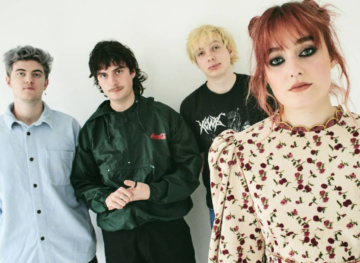
Don’t forget to check out our own interview:
Hedgehog in the Age of the Narwhal: Q&A with Eoin McLaughlin.
And see the original Saint Patrick’s Day post below!
By Ingrid Christina Lombardo McCoy (Ms. Christina)
Saint Patrick’s Day Is Almost Here
It will be March 17 before we know it. This year, I want to introduce our little best friends to the richness of Irish culture and heritage without perpetuating shallow stereotypes. Will you join me?

People Are Frustrated With How Saint Patrick’s Day Is Celebrated Outside Ireland
Seamus McKiernan writes in HuffPost:
“I’m worried the holiday has become a farce, a celebration of cartoonish symbols of Irish culture that minimize, dilute and demean what it means to be Irish.”
Things have gotten so bad, in McKiernan’s view, he doesn’t even celebrate Saint Patrick’s Day anymore.
My own spouse, Ryan McCoy, on the topic:
St. Patrick’s Day has always been frustrating for me. In my family, my mom went to church, we had traditional food, listened to traditional music, my sisters were step dancers and may have had performances but mostly a quiet family day where we celebrated or reflected on our heritage and culture. For me, the day has never been the ridiculous spectacle it has become here in the States. Obviously, Irish history and culture are richer than the narrow symbolism and stereotypes into which they get conflated.
Special thanks to Ryan’s family for helping with this piece.
Stateside, Ryan and his mother and sisters — Kathy, Maggi, and Mary — all gave input.
Cousins Claire and Eamon in Dublin spoke with us and visited their local library, bookshop, and the Irish Museum of Literature to help build our list!
Will You Help?
Calling all children’s librarians and preschool teachers to help bring authentic Irish culture back to Saint Patrick’s Day. Here are seven wonderful ways we can “be this change” in our classrooms and storytimes. And three ways we can avoid in order to better serve the Irish among us.
Wonderful Way One — Use Books By Irish Authors and Illustrators
Instead of books about Saint Patrick’s Day or about Ireland, let’s simply present the world from an Irish perspective by using books by Irish authors and illustrators!
‘The Hug’ by author Eoin McLaughlin
No one wants to hug Hedgehog because of Hedgehog’s prickles. That is … until Hedgehog meets Turtle. A heartwarming tale that shows there is someone for everyone to hug.
‘A Bit Lost’ by author/illustrator Chris Haughton
Little Owl has fallen out of the nest and can’t find Mom, but Squirrel is ready to help. What does Mom look like? Little Owl’s descriptions lead them to a few other animals first.
‘The President’s Glasses’ by author/illustrator Peter Donnelly
When the president’s glasses go missing, a plucky pigeon takes readers on a tour of Dublin to recover them. A clever introduction to the city of Dublin for young readers. Highly recommended by Claire and Eamon!
‘A Hug for You: Adam’s Journey’ by David and Adam King
Irish Book Awards’ Children’s Book of the Year 2021 — and based on a true story — this book tells of the “Virtual Hug” young Adam King gave to his teachers, nurses, and doctors during the COVID-19 pandemic.
‘This Moose Belongs to Me’ by author/illustrator Oliver Jeffers
Wilfred owned a moose. Or did he? A humorous tale about letting go of ownership and control.
‘The Tide’ illustrated by Ashling Lindsay
In this bittersweet tale, a girl spends the day at the beach with her elderly grandfather, whose memory comes and goes like the tide.
Check out Children’s Books Ireland for even more great titles.
Wonderful Way Two — Use Songs To Expand Associations
When Ryan and I started Sing, Rhyme, and Play, it was important to us to broaden and deepen people’s associations with Irish culture. We wanted to give people more than shamrocks and leprechauns. So far, we’ve done our storytime take on one traditional Irish folk song and created two original pieces. We give you our guarantee that these songs are free from harmful origins and stereotypes!
The Rattlin’ Bog
A classic Irish folk song adapted as an action song for storytime. Great for any springtime program.
Lamb in the Heather
An original song on ukulele that is great for teaching action words. Did you know Ireland has more sheep than people?
The Stew Song
An original song on ukulele with flannel board activity about a favorite food in Ireland. Although traditional Irish stew typically contains beef or lamb meat, “The Stew Song” only mentions vegetables.
“The Stew Song” pairs well with the book ‘Thank You, Omu!’ by Oge Mora about a Nigerian grandmother’s enticing stew that brings the whole neighborhood together.
Note: You’ll want to avoid the popular English-language nursery rhyme “This Old Man” in storytime — it contains derogatory references to the Irish.
Wonderful Way Three — Have A Display Of Books For Older Readers By Irish Authors And Illustrators
After your awesome storytime with books by Irish authors and illustrators, caregivers will want books for older siblings, family members, and even themselves! Here are some book recommendations for older readers.
‘Vetman and his Bionic Animal Clan’ by Noel Fitzpatrick
In this animal adventure series — based on a popular television show and written by a leading veterinary surgeon — Vetman and his bionic companions save animals everywhere from the villainous Man With No Name.
‘The Haunted Lake’ by P.J. Lynch
A picture book for older readers about a town that was flooded when the river was dammed. Ghosts still inhabit the place — is Jacob’s mother among them?
Check out these Irish writers who have won the Nobel Prize and Man Booker Prize for Fiction. And here’s a list of Best Books by Female Irish Authors.
‘Run With the Wind’ (Run Wild #1) by Tom McCaughren
The foxes of Sinna flee the fur trappers and share their secrets of survival.
Eamon loved these books growing up and still reads them now as a grown-up!
‘On Midnight Beach’ by Marie-Louise Fitzpatrick
A YA coming-of-age story that takes place in a small seaside village when a dolphin moves into Carrig Cove.
The Great Irish Weather Book by Joanna Donnelly
Meteorologist and top Irish weather forecaster Joanna Donnelly explains the weather and how it works.
Stories for Children by Oscar Wilde, illustrated by P.J. Lynch
Short stories for children by celebrated Irish playwright, author, and poet Oscar Wilde of the Victorian era. Illustrated by contemporary Irish artist P.J. Lynch.
Check out Children’s Books Ireland for even more great middle grade and YA titles.
Wonderful Way Four — Include Traditional Irish Food
Kathy suggests we serve traditional Irish food at storytime. There are a few ways we can do this!
We can use songs and flannel boards, a la the aforementioned “Stew Song.”
We can put recipe books on the display table. Look for favorites such as shepherd’s pie, colcannon, and soda bread.
And we can print out some simple recipes and give them as handouts. Encourage patrons to post photos of their creations to the library’s social media pages.
Note: Corned beef is, apparently, more Irish-American than Irish. “Please dispel the myth of corned beef,” Eamon requests. “I’ve never had corned beef in my life! We do love potatoes, though. That stereotype is true.”
Wonderful Way Five — Include Irish Music And Dance
Kathy’s idea of a great Saint Patrick’s Day program includes Irish Step Dancing.
Mary went to the Trinity Academy of Irish Dance growing up and absolutely loved it. Her words: “It was so culturally enriching and helped me connect with my Irish roots.”
Both Mary and Kathy encourage us to bring Irish music and step dancing to the library. I think this would make a great program!
Is there an Irish dance company in your town or nearby? Can they give a demonstration, a free class, or will they give a virtual performance?
We can also play traditional Irish Dance Music at the beginning or end of storytime.
Wonderful Way Six — Include Books In The Irish Language
Ireland has two official languages: Irish and English, and both are taught in the schools.
Many people outside of Ireland may be familiar with the phrase “Erin go Bragh,” Irish for “Ireland forever.” Let’s give people more than that.
Check out these “6 Brilliant Irish-Language Books For Your Child.”
Wonderful Way Seven — Include Irish Holidays Besides Saint Patrick’s Day
While Claire and Eamon don’t make a big deal of Saint Patrick’s Day in Dublin, here are some holidays they were excited to tell us about.
Samhain (pronounced “SAH-win”)
Celebrated on the night of 31. October to 1 November, Samhain is the Celtic festival that gave rise to Halloween. Festivities include bonfires, costumes, trick-or-treating, and turnip carving — which later became pumpkin carving. Try ‘Have You Seen the Dublin Vampire?’ and ‘A Spooktacular Place to Be’ by Una Woods for a spooky ghost bus tour of Dublin — and then all of Ireland — with the beloved Dublin Vampire!
Nollaig na mBan (pronounced Null-ug na Mon)
Celebrated on 6. January, the name of this holiday is Irish for “Women’s Christmas.” On this day, people pay tribute to the women in the family and men do all the housework.
Saint Brigid’s Day (just became a national holiday)
Celebrated on 1. February, this holiday that predates Christianity honors the contributions of Irish women to the world. In honor of Brigid, check out Blazing a Trail: Irish Women Who Changed the World by Sarah Webb: a non-fiction biography compilation of 28 trail-blazing Irish women.
Now that we’ve looked at seven excellent ways to work authentic Irish culture and heritage into our Saint Patrick’s Day programs, let’s look at three ways to avoid.
Way One To Avoid — Relying On The Same Old Symbols
This year, in your Saint Patrick’s Day programming, let’s avoid worn symbols of Ireland in favor of some overlooked ones.
More Than Leprechauns
Irish folklore is full of mythical creatures, not just leprechauns. Try adding fairies, giants, selkies, and more to your decorations and book selection. Did you know, Irish legends also include a pirate queen and warrior poet?
Check out Irish Legends for the Very Young by Niamh Sharkey or Classic Irish Myths, Legends, and Heroes by Ann Carroll.
On Beyond Shamrocks
Shamrocks are certainly plentiful in Ireland, but the national emblem of Ireland is the harp. That’s right, the country’s symbol is a musical instrument! So why not swap out some of those shamrock decorations with harps? Or at least just add some harps.
Just A Touch of Green
Did you know the color of Saint Patrick was blue, not green? And Ireland’s coat of arms is a golden harp on a blue background. So why not add some gold and blue to your decor this year?
Whenever Possible Stick to Irish Authors and Illustrators
A best practice — when considering using those plentiful books about leprechauns and shamrocks — is to stick to books by Irish authors and illustrators. This way you are likely to get a more authentic handling of these elements.
Way Two To Avoid — Perpetuating Irish Stereotypes
The hard-partying, heavy-drinking Irishman stereotype is harmful and should be put behind us.
The elephant in the pub is that the Irish don’t actually go big on Saint Patrick’s Day.
Claire refers to it as “a quiet day off work to enjoy the beginning of spring weather.” Eamon confirms, saying “nothing is really done.”

Can we all agree that fake red beard crafts are a no-no?
In fact, Saint Patrick’s Day in Ireland was a dry holiday until the 1970s. Selling alcohol was prohibited. The pubs were closed. It was a holy day.
It should be noted that the revelry on Saint Patrick’s Day started in the United States.
With this in mind, let’s make our Saint Patrick’s Day programming more of a cultural experience than a party. Go for dignity over foolishness; pay respect instead of demeaning.
Way Three To Avoid — Stopping The Conversation on March 18
Colleagues, let’s not stop talking about Ireland the day after Saint Patrick’s Day! Now that we’ve had a robust and meaningful program honoring Irish heritage and culture, let’s keep working to get more Irish authors and illustrators in our collections.
Let’s get more books on our shelves with Irish recipes, the Irish language, Celtic mythology, biographies of notable Irish people, holidays besides Saint Patrick’s Day, and poetry. Let’s get more Irish music in our collections. This way, when next March rolls around, and we want to join the collective celebrations of all things Irish, we can offer more than glitter hats and plastic pots of gold.
Being The Change Together
Thank you for reading these seven wonderful ways to bring authentic Irish culture back to Saint Patrick’s Day, and three ways to avoid.
I hope you will join me in making the conversation about what it means to be Irish more thoughtful and less silly. More than 30 million people in the United States of America claim Irish ancestry, 4.6 million in Canada, more than 2 million in Australia, and roughly 20% of New Zealanders. Are you one of them?
We owe it to the Irish among us to do better. We early childhood educators have the power to shape hearts and minds in their formative years. Let’s offer our favorite little patrons a rich stew of sights, sounds, and flavors to awaken their curiosity about Ireland. Let’s host programs that will make the Seamus McKiernans and Ryan McCoys — quoted at the beginning of this piece — want to celebrate Saint Patrick’s Day again. And all those who have been embarrassed and disappointed, all those who have seen the belittling elements and thought “that’s not my culture” and “that’s not why my ancestors suffered great hardship to make a better life for their families” — let’s host a storytime they will be proud to bring their children to.
About The Author:
Ms. Christina (she/they) is Irish by marriage — in 2013, she married into an Irish family and has been learning ever since! She is an early literacy teacher and co-founder of Sing, Rhyme, and Play — along with her spouse Ryan McCoy. Ms. Christina is Storytime Solidarity’s Director of Music and Media.
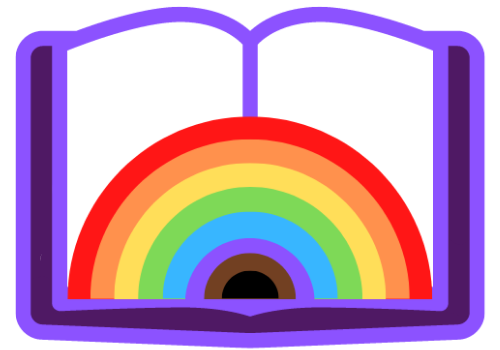
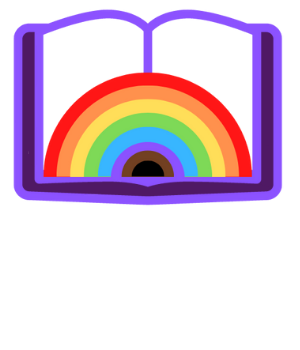
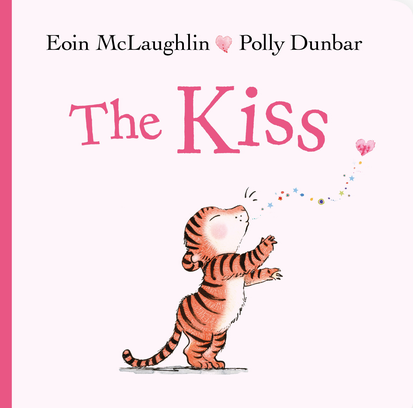
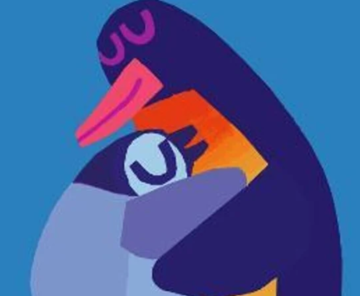
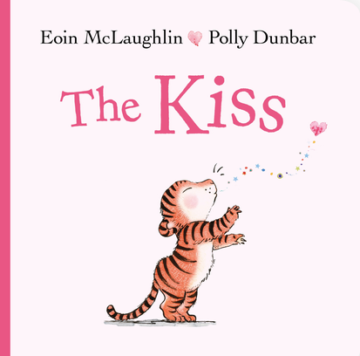
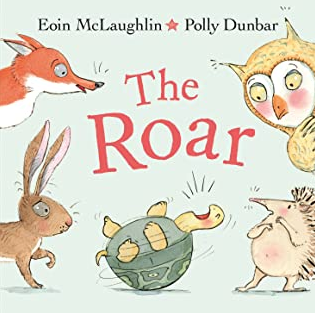
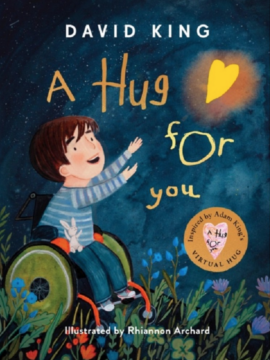
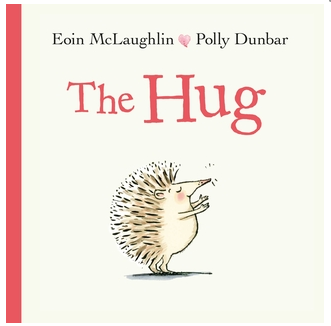










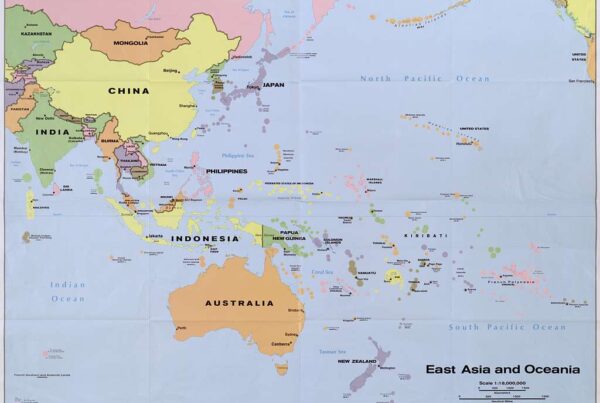
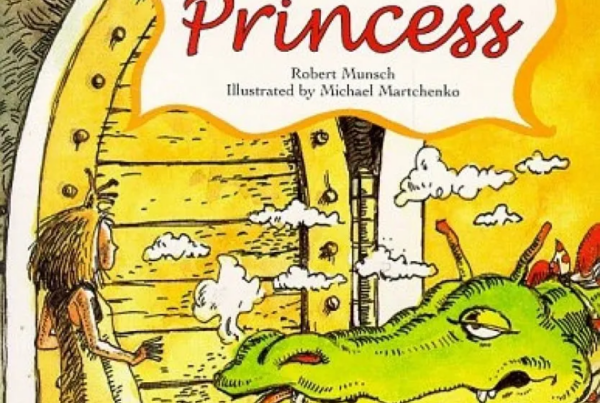
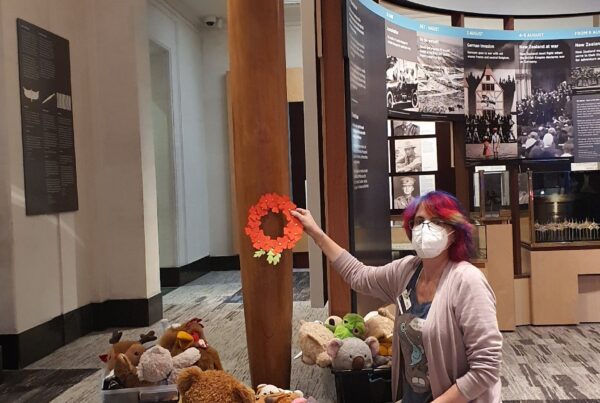
The best way to celebrate St. Patrick’s Day is to celebrate Saint Brendan the Voyager, Saint Colmcille who called Jesus his Druid, and the Goddess Brigit. Even the Brigidine nuns know “saint” is just a costume she wears for now. Saint Patrick was a late comer who did little more than bring in the colonizing forces of Rome to Ireland and opened the way for the brutal colonization of the Romanized Christians of Britain. Green is a mask Patrick wears, like a papal spy.
Great thinking critically about the symbols associated with this holiday and for digging deeper! Brigid, especially, is a fascinating character who now — for the first time this year in 2023 — has a holiday all her own that falls on Feb. 1.